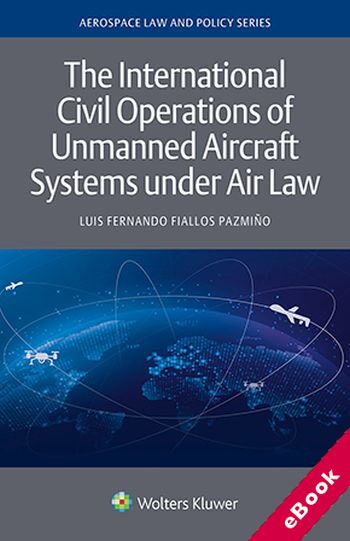
The device(s) you use to access the eBook content must be authorized with an Adobe ID before you download the product otherwise it will fail to register correctly.
For further information see https://www.wildy.com/ebook-formats
Once the order is confirmed an automated e-mail will be sent to you to allow you to download the eBook.
All eBooks are supplied firm sale and cannot be returned. If you believe there is a fault with your eBook then contact us on ebooks@wildy.com and we will help in resolving the issue. This does not affect your statutory rights.
The International Civil Operations of Unmanned Aircraft Systems under Air Law explores the current legal and regulatory frameworks comprehensively from the perspective of how they may facilitate the routine and cross-border operations of unmanned aircraft systems (UAS). While the International Civil Aviation Organization is working to amend and create new Standards and Recommended Practices for the operation of UAS on cross-border flights, Member States have already produced regulations that facilitate the integration and operation of the aircraft within their national airspace. This situation is causing to subvert the attempt to develop uniform and harmonised normative for UAS for international flight operations. The increasing operations of UAS have increased the safety and security concerns on manned aviation, and hence there is an escalating need to adopt a comprehensive regulatory framework for the operation of UAS aimed at safe and efficient integration. The author, a well-known air law practitioner and diplomat, identifies the legal challenges and proposes sound, well-informed measures to tackle such challenges.
What’s in this book:
Analysis of the cross-border operations of UAS focuses on aspects relevant to their immediate future and addresses such questions as the following:
Also described are the main bilateral and multilateral air services and transport agreements with respect to their application to the operation of UAS.
How this will help you:
Addressing the philosophical questions such as the incursion of artificial intelligence in the operation of UAS, without artificial consciousness and how it will impact the future of civil aviation, this book is well timed to meet the challenge for States and International Civil Aviation Organization and airspace planners. Its innovative approaches to the management of the air traffic safety and security of UAS are sure to influence the development of regulations for civil UAS. The book will be welcomed by aviation regulators, research organisations, aviation lawyers, and academics in international law and air law.